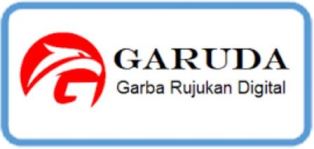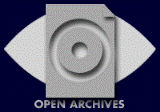Eksplorasi dan Apresiasi di Era Digital: Platform Youtube Sebagai Media Bagi Mahasiswa Seni Tari
 ), Oktavianus Oktavianus(2), M Arif Anas(3), Admiral Admiral(4), Ninon Syofia(5),
), Oktavianus Oktavianus(2), M Arif Anas(3), Admiral Admiral(4), Ninon Syofia(5), (1) Institut Seni Indonesia Padang panjang
(2) Institut Seni Indonesia Padang panjang
(3) Institut Seni Indonesia Padang panjang
(4) Institut Seni Indonesia Padang panjang
(5) Institut Seni Indonesia Padang panjang
 Corresponding Author
Corresponding Author
DOI : https://doi.org/10.24036/voteteknika.v11i3.125198
Full Text:
 Language : id
Language : id
Abstract
Di tengah era modernisasi dengan teknologi dan perubahan global yang signifikan, peran YouTube dalam seni tari semakin krusial. Penelitian ini bertujuan untuk mengetahui dampak YouTube dalam eksplorasi dan apresiasi seni tari di era digital. Mahasiswa seni tari kini dapat dengan mudah mengakses beragam konten seni tari di YouTube, membuka peluang karir yang lebih luas, mendapatkan inspirasi tanpa batas, dan belajar secara mandiri. Namun, pemahaman tentang hak cipta dan etika online penting bagi mahasiswa seni tari yang memanfaatkan platform ini. Dalam penulisan artikel ini, penulis mengadopsi metode Library Research dengan penelitian mendalam melalui berbagai sumber referensi seperti buku, jurnal, dan penelitian terkait. Hasil penelitian menunjukkan bahwa YouTube memiliki peran utama dalam memberikan akses tak terbatas pada seni tari, memajukan karir mahasiswa seni tari, memberikan inspirasi tak terbatas, dan mendukung pembelajaran mandiri. Meskipun demikian, pemahaman tentang hak cipta dan menjaga etika online merupakan aspek penting bagi mahasiswa seni tari. Dengan pemahaman yang baik, YouTube dapat menjadi alat berharga dalam pendidikan seni tari dan perkembangan seniman tari masa depan.
Kata kunci : Apresiasi, Eksplorasi, Seni Tari, Youtube
In the midst of modernization and significant global changes, the role of YouTube in the field of dance has become increasingly crucial. This research aims to explore the impact of YouTube on the exploration and appreciation of dance art in the digital era. Dance students can now easily access a wide range of dance content on YouTube, opening up broader career opportunities, limitless inspiration, and the ability to learn independently. However, understanding copyright and online ethics is essential for dance students who utilize this platform. In this article, the author adopts a Library Research method, conducting in-depth research through various reference sources such as books, journals, and related studies. The research findings indicate that YouTube plays a primary role in providing unlimited access to dance art, advancing the careers of dance students, offering boundless inspiration, and supporting self-directed learning. Nevertheless, a good understanding of copyright and maintaining online ethics are crucial aspects for dance students. With a solid understanding, YouTube can be a valuable tool in dance education and the development of future dance artists.
Keywords: Appreciation, Exploration, Dance, Youtube
References
F. Ariyani, G. E. Putrawan, A. R. Riyanda, As. R. Idris, L. Misliani, and R. Perdana, “Technology and minority language: an Android-based dictionary development for the Lampung language maintenance in Indonesia,” Tapuya: Latin American Science, Technology and Society, vol. 5, no. 1, p. 2015088, Dec. 2022, doi: 10.1080/25729861.2021.2015088.
V. Abed et al., “YouTube Is a Poor-Quality Source for Patient Information Regarding Patellar Dislocations,” Arthroscopy, Sports Medicine, and Rehabilitation, vol. 5, no. 2, pp. e459–e464, Apr. 2023, doi: 10.1016/j.asmr.2023.01.014.
A. Tarsa, “Apresiasi seni: Imajinasi dan kontemplasi dalam karya seni,” JPGI (Jurnal Penelitian Guru Indonesia), vol. 1, no. 1, 2016.
Dyas Kirana Khomariah, “YouTube Sebagai Media Keterbukaan Ekspresi Dalam Meningkatkan Kreativitas Seni Tari,” presented at the Seminar Nasional Seni dan Desain 2018, Indonesia, Oct. 2018, pp. 269–274.
F. Y. Pangestika and S. Yanuartuti, “Pembelajaran Mandiri Seni Tari Melalui Konten Youtube sebagai Inovasi Pembelajaran Masa Kini,” Gondang, vol. 4, no. 2, p. 144, Dec. 2020, doi: 10.24114/gondang.v4i2.18098.
Kim, Yeun-Hwa and yoon sumi, “A Study on Audience Attraction and Perception Changes Utilizing Memedia (YouTube) Dance Contents: Focused on In-Depth Interviews with Subscribers,” The Journal of Korean Dance, vol. 37, no. 2, pp. 73–96, Jun. 2019, doi: 10.15726/JKD.2019.37.2.004.
Shin, Min Hye, “360° VR Modern Dance Content Making for Trial Version & Exploration of Its Practical Use,” The Korean Journal of Dance Studies, vol. 73, no. 1, pp. 135–148, Mar. 2019, doi: 10.16877/KJDS.73.1.201903.135.
H. Herlinah, “UPAYA PENINGKATAN MOTIVASI BELAJAR SENI TARI PADA SISWA SMP MELALUI KEGIATAN APRESIASI SENI,” Jurnal Seni dan Pendidikan Seni, vol. 4, no. 2, Nov. 2015, doi: 10.21831/imaji.v4i2.6713.
J. Kang et al., “Dancing on the inside: A qualitative study on online dance learning with teacher-AI cooperation,” Educ Inf Technol, vol. 28, no. 9, pp. 12111–12141, Sep. 2023, doi: 10.1007/s10639-023-11649-0.
J.-C. Hong, M.-L. Chen, and J.-H. Ye, “Acceptance of YouTube Applied to Dance Learning,” IJIET, vol. 10, no. 1, pp. 7–13, 2020, doi: 10.18178/ijiet.2020.10.1.1331.
N. K. Adzan and A. Y. Setiawan, “Development of Dance Learning Media - Based on Interactive Video for Children with Special Needs,” in Proceedings of the 3rd Universitas Lampung International Conference on Social Sciences (ULICoSS 2022), R. Perdana, G. E. Putrawan, B. Saputra, and T. Y. Septiawan, Eds., in Advances in Social Science, Education and Humanities Research, vol. 740. Paris: Atlantis Press SARL, 2023, pp. 442–452. doi: 10.2991/978-2-38476-046-6_45.
A. Musa, M. N. Hashim, N. Ain Chua Abdullah, and R. M. Musa, “Use of Computer Technology in the Internet Using the Youtube in Teaching and Learning Student Basic Technique Dances Contemporary University of Malaysia Terengganu,” J. Phys.: Conf. Ser., vol. 1793, no. 1, p. 012032, Feb. 2021, doi: 10.1088/1742-6596/1793/1/012032.
S. N. Anggraeni and E. W. Handayani, “YOUTUBE SEBAGAI MEDIA PEMBELAJARAN SENI TARI SECARA DARING DI KELAS XI SMAN 1 KADEMANGAN BLITAR,” JPS, vol. 10, no. 2, pp. 296–310, Jul. 2021, doi: 10.26740/jps.v10n2.p296-310.
J. H. Seo and C. Bergeron, “Art and Technology Collaboration in Interactive Dance Performance,” in Teaching Computational Creativity, M. Filimowicz and V. Tzankova, Eds., 1st ed.Cambridge University Press, 2017, pp. 142–160. doi: 10.1017/9781316481165.007.
K.-H. Kim, “Analysis of Personal Media Dance Content -focused on YouTube,” Ksd, vol. 78, no. 3, pp. 25–39, Jun. 2020, doi: 10.21317/ksd.78.3.2.
G. Berardi, “Art and Science of Mobility: Aurélien Broussal-Derval and Stéphane Ganneau,” j dance med sci, vol. 26, no. 2, pp. 143–144, Jun. 2022, doi: 10.12678/1089-313X.061522g.
P. Hidayatullah, D. Haryanto, and D. Angelina, “Film Komedi Rukun Karya: Strategi Seniman Tradisi Mempertahankan Eksistensi pada Era Pandemi,” REKAM, vol. 17, no. 2, pp. 159–174, Oct. 2021, doi: 10.24821/rekam.v17i2.5177.
A. Citrawati, N. Syofia, and W. Wahyuni, “Transformasi Pendidikan Seni melalui Teknologi: Memperluas Horison Kreativitas dalam Pembelajaran Seni Tari,” Jurnal Pendidikan Teknologi Informasi dan Vokasional, vol. 5, no. 1, pp. 118–125, 2023, doi: 10.23960/27854.
H. Dashtian, D. Murthy, and G. Kong, “An Exploration of e-Cigarette–Related Search Items on YouTube: Network Analysis,” J Med Internet Res, vol. 24, no. 1, p. e30679, Jan. 2022, doi: 10.2196/30679.
L. Karina and M. Kant, Hitler’s Dancers: German Modern Dance and the Third Reich, 1st ed. Berghahn Books, 2003. doi: 10.2307/j.ctt1x76fgm.
Saputra, Bayu, A. R. Riyanda, and G. C. Surawan, “Impact of Learning Content in Youtube on the attitude of information Technology Education Students,” Jurnal Pendidikan Teknologi Informasi dan Vokasional, vol. 2, no. 1, 2020.
H. Hartanto, “Kreativitas Sanggar Sang Citra Budaya Surakarta dalam Pelatihan Tari Masa Pandemi Covid-19,” AbdiSeni, vol. 13, no. 1, pp. 65–78, Jun. 2022, doi: 10.33153/abdiseni.v13i1.4212.
H. Prasetyo, A. S. Putri, and M. Munaris, “Efektifitas model pembelajaran flipped classroom berbasis youtube sebagai media pembelajaran Stilistika pascapandemi covid-19,” AJBS, vol. 23, no. 1, Apr. 2022, doi: 10.23960/aksara/v23i1.pp21-29.
L. R. A. Agnes, “OPTIMALISASI MEDIA PEMBELAJARAN DALAM HYBRID LEARNING PADA MATA PELAJARAN SENI BUDAYA (TARI) DI SMP NEGERI 50 SURABAYA,” Jurnal Pendidikan Sendratasik, vol. 11, no. 2, 2022.
H. Herlinah, “UPAYA PENINGKATAN KEMAMPUAN MENARI TARI TOPENG GUNUNGSARI PADA MAHASISWA JURUSAN PENDIDIKAN SENI TARI DENGAN PENDEKATAN APRESIASI SENI DAN LATIHAN SECARA RUTIN,” Jurnal Seni dan Pendidikan Seni, vol. 5, no. 2, Nov. 2015, doi: 10.21831/imaji.v5i1.6686.
H. Hermawan, P. Kaliandra, M. R. Ayu, and M. Amirulloh, “Pelindungan Hukum Hak Cipta Atas Lagu Dan/Atau Musik Yang Berkaitan Dengan Kover Lagu (Song’s Cover) Dalam Situs Youtube Berdasarkan Hukum Positif Terkait,” Jurnal Sains Sosio Humaniora, vol. 6, no. 1, pp. 956–970, 2022.
M. A. P. Bachri and T. A. Ramli, “Perlindungan Hukum Pencipta Lagu atas Pembayaran Royalti Cover Lagu pada Media Youtube Ditinjau dari Peraturan Pemerintah Nomor 56 Tahun 2021 Tentang Pengelolaan Royalti Hak Cipta Lagu,” Bandung Conference Series: Law Studies, vol. 2, no. 1, pp. 800–802, 2022, doi: https://doi.org/10.29313/bcsls.v2i1.1230.
F. A. Asril, R. R. Permata, and T. S. Ramli, “Perlindungan Hak Cipta pada Platform Digital Kreatif YouTube,” jurisprudence, vol. 10, no. 2, pp. 146–162, Mar. 2021, doi: 10.23917/jurisprudence.v10i2.10368.
L. R. Soemarsono and R. Dirkareshza, “URGENSI PENEGAKAN HUKUM HAK CIPTA TERHADAP PEMBUAT KONTEN DALAM PENGGUNAAN LAGU DI MEDIA SOSIAL,” JULR, vol. 4, no. 2, p. 615, Nov. 2021, doi: 10.26623/julr.v4i2.4005.
J. Rosenoer, Cyberlaw: the law of the Internet. New York: Springer, 1997.
Margaritha Rami Ndoen , Hesti Monika, “PRINSIP FAIR USE TERHADAP COVER VERSION LAGU DALAM PERSPEKTIF PERLINDUNGAN HAK CIPTA (Perbandingan Antara Undang-Undang Hak Cipta Indonesia Dengan Amerika Serikat),” PLJ, vol. 1, no. 1, pp. 1–8, Jan. 2020, doi: 10.51342/plj.v1i1.42.
B. A. Riswandi et al., Pembatasan dan Pengecualian Hak Cipta di Era Digital. Citra Aditya Bakti, 2017.
S. N. Lestari, “PERLINDUNGAN HAK MORAL PENCIPTA DI ERA DIGITAL DI INDONESIA,” Diponegoro Private Law Review, vol. 4, no. 3, Nov. 2019, Accessed: Sep. 02, 2023. [Online]. Available: https://ejournal2.undip.ac.id/index.php/dplr/article/view/6550
S. Burke, S. Snyder, and R. Rager, “An Assessment of Faculty Usage of YouTube as a Teaching Resource,” IJAHSP, 2009, doi: 10.46743/1540-580X/2009.1227.
N. Netanel, Copyright’s paradox. Oxford ; New York: Oxford University Press, 2008.
C. D. Martin, “Blogger ethics and YouTube common sense,” SIGCSE Bull., vol. 39, no. 4, pp. 11–12, Dec. 2007, doi: 10.1145/1345375.1345379.
 Article Metrics
Article Metrics
 Abstract Views : 1096 times
Abstract Views : 1096 times
 PDF (Bahasa Indonesia) Downloaded : 162 times
PDF (Bahasa Indonesia) Downloaded : 162 times
Refbacks
- There are currently no refbacks.

This work is licensed under a Creative Commons Attribution-ShareAlike 4.0 International License.



.png)


.jpg)




